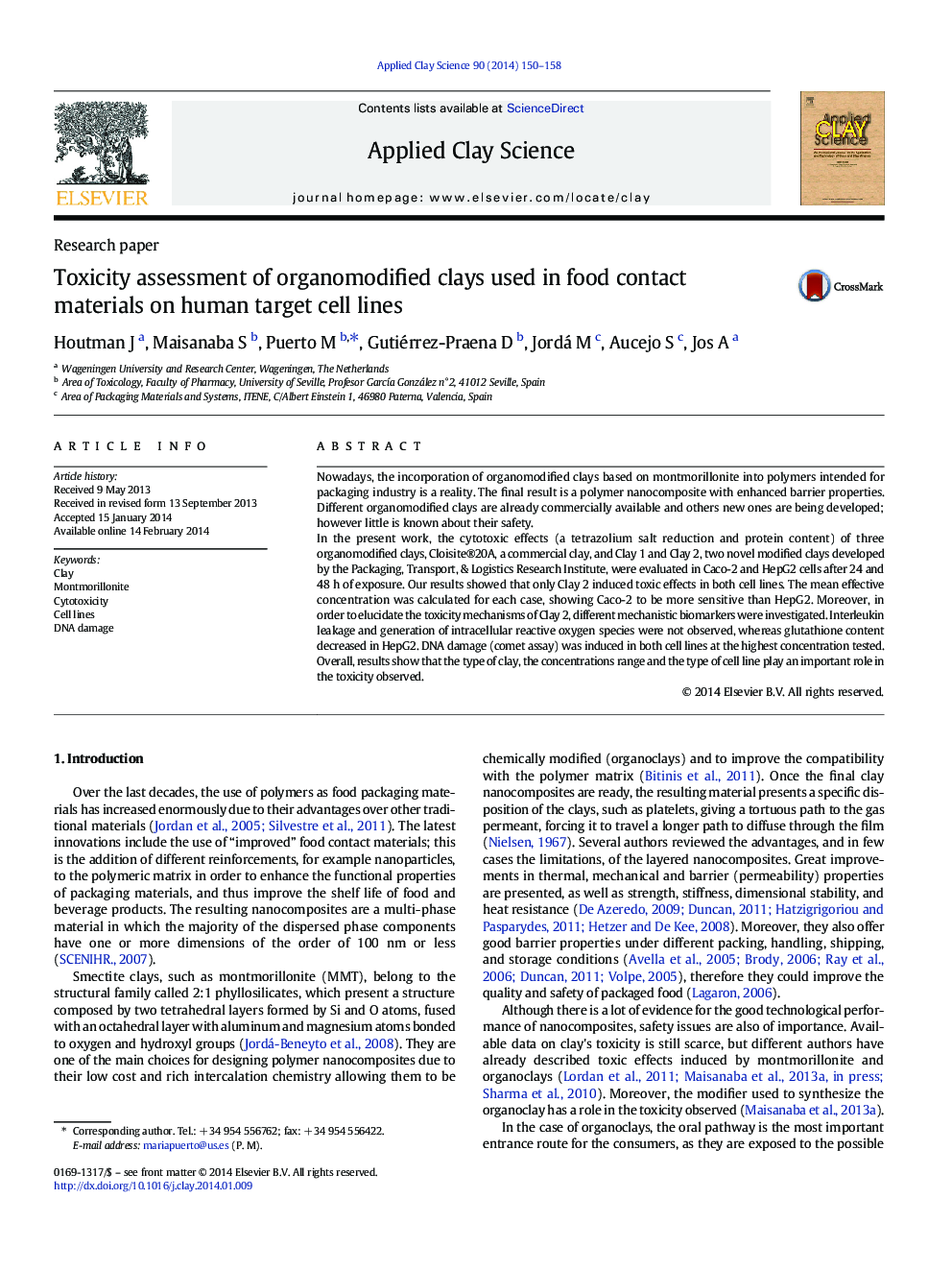| Article ID | Journal | Published Year | Pages | File Type |
|---|---|---|---|---|
| 1694719 | Applied Clay Science | 2014 | 9 Pages |
Abstract
In the present work, the cytotoxic effects (a tetrazolium salt reduction and protein content) of three organomodified clays, Cloisite®20A, a commercial clay, and Clay 1 and Clay 2, two novel modified clays developed by the Packaging, Transport, & Logistics Research Institute, were evaluated in Caco-2 and HepG2 cells after 24 and 48Â h of exposure. Our results showed that only Clay 2 induced toxic effects in both cell lines. The mean effective concentration was calculated for each case, showing Caco-2 to be more sensitive than HepG2. Moreover, in order to elucidate the toxicity mechanisms of Clay 2, different mechanistic biomarkers were investigated. Interleukin leakage and generation of intracellular reactive oxygen species were not observed, whereas glutathione content decreased in HepG2. DNA damage (comet assay) was induced in both cell lines at the highest concentration tested. Overall, results show that the type of clay, the concentrations range and the type of cell line play an important role in the toxicity observed.
Related Topics
Physical Sciences and Engineering
Earth and Planetary Sciences
Geochemistry and Petrology
Authors
Houtman J, Maisanaba S, Puerto M, Gutiérrez-Praena D, Jordá M, Aucejo S, Jos A,
